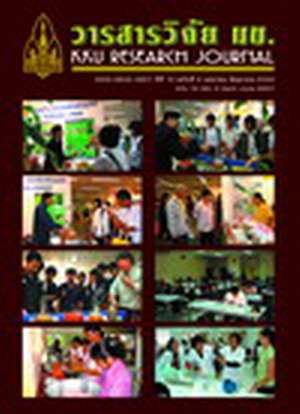Thermal comfort evaluation of bamboo wattle and daub wall in dwelling (Thai)
Main Article Content
Abstract
Techniques worldwide for using bamboo walls in construction today consist mainly of 3 methods: weaving, vertical and horizontal culms and wattle and daub (W&D). In Thailand, W&D techniques are mostly found in rural granary structures. This research studies the possibility of using the technique for Thai rural dwellings. The thermal evaluation of proposed single and double W&D walls compared with wood, traditional W&D and woven bamboo was conducted. From statistics, the proposed walls are found to have higher thermal conductivity than wood and traditional bamboo walls. However, the temperature change in the W&D wall was the most stable compared to other local materials. The room temperature overall was similar to wood and traditional walls. Of course comfort can be improved by architectural design: wide openings and efficient air ventilation. With its ecological, economical, and achievable advantages, more research on the subject should be carried out in order to apply the sufficiency economy philosophy into practice efficiently.


